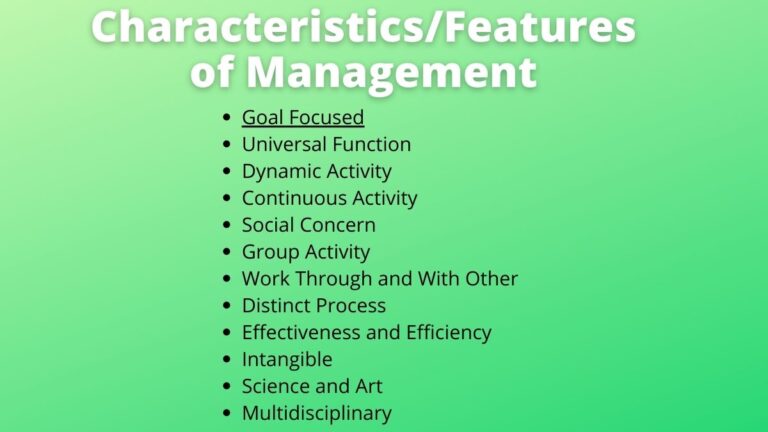What is Market Segmentation? Definition, Features, Process, Types, Levels, and Pros/Cons
It is obvious that the overall market is large and there exist a variety of consumers who are different in their needs, wants, tastes, and other characteristics. Do you think your company will be successful in satisfying all those customers? I think not. Let’s understand what the market segmentation concept talks about.
What is Market Segmentation?
Market segmentation is the activity of dividing a larger market into its various parts or segments that share some common characteristics.
The larger market can be divided into different groups in terms of their characteristics like tastes, preferences, age, gender, location, interests, buying behavior, and so on.
By segmenting the market, you can better understand the market and who your target customers are, your target customers’ specific needs & interests. As such, you can develop relevant products and marketing strategies that best meet customers’ expectations.
This will enable your company to get more sales, more profits, and increased customer confidence in your business.
Segmentation allows companies to create strategies based on the types of consumers and provide personalized promotional messages with the certainty that will be successfully received. This also reduces the failure rate brands may face when executing marketing efforts in random markets.
So, What is the Market Segment? A market segment is a part of the larger market or a category of customers who have similar likes and dislikes about some products.
Philip Kotler defined market segmentation as – It is the task of dividing a market into distinct groups of buyers with different needs, characteristics, or behaviors who might require separate products or marketing mixes.
Objectives of Market Segmentation
The following are the main objectives of market segmentation.
- Helps to divide the heterogeneous market into smaller homogeneous markets.
- Identify and select the target market.
- Helps to attract potential customers.
- Helps to design effective marketing programs.
- Enable companies to better serve the target customers.
Characteristics of Market Segmentation
The following six are the main characteristics of market segmentation.
Identifiable
The market should be identifiable. If you try to segment the market, you should be able to identify the customers and their specific needs, wants, and other characteristics.
Substantial
It is usually not cost-effective when you target small market segments. What this characteristic says is – the market should be large enough to have profitable potential.
Related: Principles of Setting Organizational Goals
Accessible
The market you target should be accessible. Your company should be able to reach the segmented markets. You should choose the right promotional tools and distribution channels to quickly reach the target customers.
Stable
A segment must be stable enough over an extended period of time to allow for strategic marketing in order for a marketing campaign to be successful.
Differentiable
Needs, tastes, and other characteristics of different market segments should be different from each other. They should respond differently to the marketing efforts of the firm.
Actionable
Once you define your target market, your company must be able to provide the products or services to that market segment.
Process of Market Segmentation
In order to get the optimum results, it is not enough to know what market segmenting is. It is necessary to know how it could be successfully implemented. The following are the main steps for it.
Identify Market Segments
The first step in market segmentation is the identification of target market segments. You should identify who will be your target market. At this step, you should gather information on different types of consumer groups who could buy your products.
List the Market Segments
Once you have collected the information about the different market segments, it is time to list them based on their characteristics.
Evaluation
In this step, the evaluation of each market segment is done. The evaluation criteria can be the size of the market, the demand of the market, competitive position, corporate goals with the segment, etc.
Select a Target Market
Once you evaluated each of the market segments, it is time to select the best market segment for your company. The best segment is one, which offers the greatest opportunities for the company.
Develop a Positioning Strategy
Implementing the marketing strategies right after choosing the target market may not be an effective step. First, develop a positioning strategy that can best appeal to target customers.
Related: Product Positioning
Run Marketing Program
It is the implementation stage of your positioning strategy. This includes the implementation of different aspects of the marketing mix i.e. product, price, distribution, and promotion.
Review the Result
Reviewing the result is the last stage of the market segmentation process. It is time to check whether your segmentation process has worked well or not.
Levels of Market Segmentation
There are five main levels for segmenting the market. They are mentioned below:
- Mass Marketing – In the mass marketing level of segmentation, a brand offers the same product to all the customers who have different needs and interests.
- Segment Marketing – It is marketing that we are discussing now. Here, a company divides the market into several segments and targets one which it can best serve.
- Niche Marketing – It is a specialized form of marketing. With niche marketing companies target a very small segment of the market.
- Local Marketing – As the name suggests, local marketing, targets the customers of the local area.
- Individual Marketing – It is based on satisfying the needs and wants of an individual prospective customer.
Bases/Types of Market Segmentation
The bases of market segmentation are also called the types of market segmentation. There are four main bases for segmenting markets.
Demographic Segmentation
The market can be segmented based on the demographic variables of the consumers such as age, sex, income, marital status, education, nationality, ethnic background, etc.
Geographic Segmentation
Geographic segmentation assumes that the same areas of people share common characteristics. Some geographic variables by which the market is segmented include area, climate, population density, geographic location, area, or region, etc.
Psychographic Segmentation
Psychographic segmentation is based on the variables like people’s social class, lifestyles, interests, personality, attitudes, etc.
Behavioral Segmentation
The goal of behavioral segmentation is to target certain responses, i.e., consumer behaviors, patterns, and the manner in which consumers make decisions and make purchases.
Advantages and Disadvantages of Market Segmentation
Effective market segmentation can offer your business a lot of benefits such as attracting potential customers and outperforming their expectations. However, it also has some drawbacks.
Advantages:
- Identify and attract the right customers.
- Increase the marketing efficiency of the firm.
- Helps to provide clear-cut messages to target markets.
- Helps to develop the right marketing strategies.
- Helps to build a brand.
- Differentiate your brand from others.
- Increase customer satisfaction.
- Helps to invest company effort in the right place.
Disadvantages:
- The segmentation process requires upfront expenses.
- Market segmenting is a time-consuming process.
- Targeting only a small market will not be profitable.
- Marketing for each segment can also become expensive.
In conclusion…
Market segmentation is an effective tool for businesses to identify the target market and best work in accordance with the market’s requirements. Companies should apply it effectively as no single company can satisfy the whole market.
Read Next: The 5 Essentials of Market Segmentation
Sajan Kushmi is a content writer with more than 4 years of experience. He holds BIM Degree. He write on the topics related to Management, Marketing, and Entrepreneurship.






